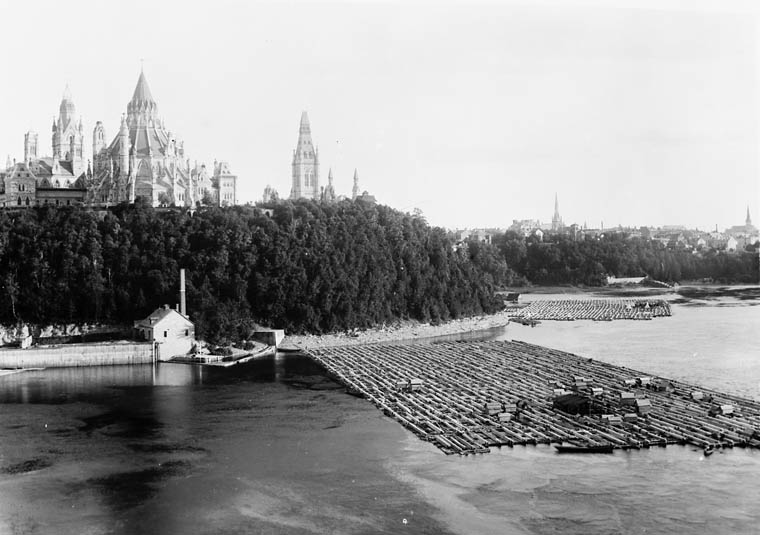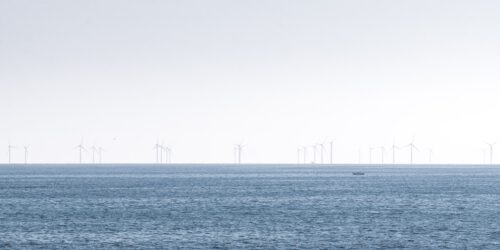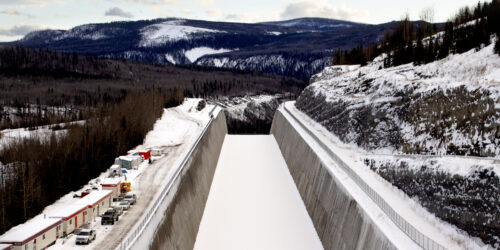Thinking with History About the Future with Immersive Technology

This post by Jim Clifford and Atif Ghani originally appeared as part of a series on Environmental Histories of the Future on NiCHE, the Network in Canadian History & Environment.
Later this year, visitors to the 2012 Olympic Park in London will have the opportunity to explore the region’s history through a series of augmented reality experiences on their phones or other devices (iPads or mixed-reality headsets). Sitting at a picnic table alongside the Lee Navigation Canal at the northwest edge of the Olympic Park, the above model will transport users back in time to the same location at the turn of the twentieth century.[1] The audio encourages them to think of the global connections between the large confectionery factory that once stood at this location with the sugar cane fields in Jamaica and the coconut plantations in Sri Lanka (then Ceylon) and the increasingly global consumers. We hope this will encourage them to think about globalization historically and plant some seeds that might allow them to “think with history” about the global resources and labour required to support their consumption in the twenty-first century.

Alix Green, at the University of Essex, explains that the “thinking with history” approach “humanises and demythologises what can appear to be timeless realities or ideas and, in doing so, breaks down determinism and opens up the possibility of different futures.” She goes on to argue “thinking with history involves being sensitive to apparent contradictions, outliers and the role of contingency.” Green makes an important distinction between the older use of history to understand the future by Hegel or Marx, who looked to the past to find “deterministic patterns” and analyzed these patterns to create a “guide to the future by projecting these patterns and laws forward” (quoted from David Staley). For Green, thinking with history involves “a disciplined imagination of an unrecoverable past from which plausible scenarios of an unknowable future can be inferred.”[1]
The past, as the future, is ‘not here’; neither exists, hence we cannot with any certainty either recover the former or anticipate the future. We can only represent them. For historians Gaddis and Staley, imagination is the skill that makes the process of representation possible.
Alix Green (2012)
This way of thinking is a powerful addition to the forecasts developed from mathematical models created by climate scientists, ecologists, and economists that dominate our thinking about the climate and the broader environment in the future. We need these models, but we also need to contextualize their predictions and remain attentive to their limitations, both in predicting the future and in communicating messages about the future to people. Without attention to history and the contingency of the past, people feel locked into the energy regimes, politics, and economic systems that dominate the present. We think Green makes a very compelling case, but are left with the question: how can we encourage more people to consider history when thinking about the future?
Our hypothesis is that augmented and virtual reality technology presents a new opportunity for nonlinear storytelling that will allow us to create engaging immersive experiences to get our audience to think historically about the future challenges presented by the limits of the biosphere. The above small project is the first immersive experience emerging from our collaboration over the past 18 months. We plan to expand the approach and create immersive experiences linking London’s Surrey Commercial Docks with the timber coves in Quebec City, rafts floating down the St. Lawrence River, sawmills on the Gatineau River, and timber camps located another hundred kilometres up the Ottawa Valley. And we’ll link the industrial flour mills in Silvertown on the eastern edge of London with the large grain elevators in the Port of Montreal and the railroads, grain elevators, and farms that spread out across southern Saskatchewan during the first few years of the twentieth century.
Our goal is to get people to think about London’s history and the geographical, political, and economic context that allowed it to grow beyond local ecological limits in the nineteenth century, juxtaposed to the present, where a network of global cities are putting too much pressure on the limits of the earth. We will also encourage users to consider the links between these transatlantic connections brought by commodity exchanges and the process of settler colonialism. Timber ships provided cheap passage to European immigrants travelling to North America, increasing the settler population. Logging camps pushed deep into unceded Algonquin territory. The creation of a wheat exporting economy in Saskatchewan coincided with dispossession and starvation of the Cree, Nakota, Dakota, and Lakota, the pass system, and residential schools that followed on the plains. We’ll encourage the audience to consider how this context shapes the futures they want to create. Can we continue to allow geography to hide the consequences of our actions?
We see immersive technology as a new opportunity to present history to the public to stimulate thinking about the future. It has the potential to highlight contingency and context better than linear storytelling. But with this ambition, we are cognizant of the many challenges that come with trying to develop immersive experiences that will be compared against high-budget commercial video games. So at this point, we ask you to wish us luck and to watch this space for future updates on how our collaboration unfolds.
[1] The Clarnico Site, part of Groundbreakers, a 9-point AR map of the industrial and social history of Queen Elizabeth Olympic Park in London. Produced by Heritage 5G for the Heritage Lottery Fund, LivingMaps UK, Foundation for Future London. Set for an August 2021 public launch. Audio text by Jim Clifford.
[2] Alix Green, “Continuity, Contingency and Context: Bringing the Historian’s Cognitive Toolkit into University Futures and Public Policy Development,” Futures 44, no. 2 (March 2012): 174-180.





